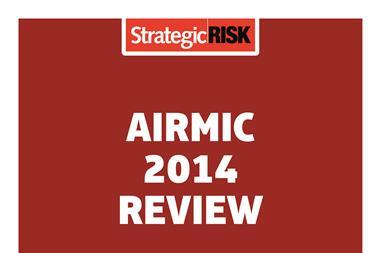The risk agenda struggles to be heard at the top table and to create a more effective relationship between risk and the board, risk advisers need a compelling message

Engaging the board is key to managing risks and Airmic is working on a guide that investigates the value of appointing chief risk officers who report directly to the board. John Hurrell, Airmic chief executive says: “We’ve been working with external bodies such as the Tomorrow’s Company to investigate whether chief risk officers have a role outside financial institutions.
“There are a few in risk management, some who don’t own the title but have the responsibilities of a chief risk officer, and what we’re trying to do is accumulate the knowledge: what led these organisations to appoint somebody of that level of seniority who reports directly to the board.
“This guide won’t be available at the conference but will be available later this year.”
While the guide is being scoped out, risk managers and corporate governance experts discuss what is needed to engage the board.
According to Bob Garratt, corporate governance and board development consultant and visiting professor at Cass Business School, to create a more effective relationship between the risk function and the board, risk managers must stand up and show their bosses that they are not mere insurance buyers, as some senior leaders perceive them to be.
For their part, boards need to realise the value of the talent they have at their disposal “for the simple reason that without it, your business will die”, says Garratt.
“Most businesses, most boards, don’t spend a lot of time thinking about uncertainty. In fact, they are terrified of doing so. They don’t have any means of doing so, never mind ways of bringing their information into the business,” says Garratt.
Romancing the board
It is in this space that risk managers can prove their value and improve their relationship with the board. By finding their place at the crossroads between senior leaders and the executive, risk managers can demonstrate their importance to the board.
An increasing focus on interrogating the business model at the heart of a firm, for
of the risk function.
“The risk management function has to deal with a host of risks – political, economic and so on – but the key issue for them is to do with business model choice,” says Charles Baden-Fuller, centenary professor of strategy at Cass Business School.
“If the risk management function has good people, its job is to tiptoe up to the board and say: ‘Excuse me, perhaps I can help you analyse and then communicate some of these risks, because we both share the same agenda’.
“This can be a difficult process. We all understand there is a hierarchical relationship between the risk management function and the board of directors. If the board has a good relationship with the chief executive and the latter has a good relationship with the risk management function, this process can be simple. However, this isn’t always the case.
“Risk management is difficult, but many boards do not have the resources to fully analyse the problem. They need help. Often, there need to be clear lines of communication between the risk management group (suitably resourced with strategy expertise) direct to the board, especially around discussion of the business model.”
Good communication
To do this effectively, the risk management function needs to look at what – and how – it communicates and really challenge the board’s approach. Colin Coulson-Thomas, professor at the University of Greenwich and Charles Baden-Fuller a director of ACCA’s governance, risk and performance global forum, says: “There is a range of people-reporting risks rather than doing much about them. Risk managers need to up their game.
They need to shift their emphasis from planning and strategising to implementation and action.”
Daniel San Millán del Rio, risk manager at Spanish infrastructure company Ferrovial, agrees. “Senior managers need to know that ERM is a tool that will put a huge amount of information at their fingertips, on their laptop, their iPad, wherever they are – in a plane, in Africa, in Asia. This is the tool that will enable them to make the right decision.
“You have to explain what you are going to do. Everybody has to understand that this is not just another process – we have enough of those. It is a special project.
“The key issue is to convince the board that this tool is going to provide members with the information to make the correct decision on time,” says San Millán. “If you have a business with 100,000 employees in 40 or 50 countries, it’s not easy to always know what’s going on with the business line, and the board knows this. But with a properly integrated ERM, it has all the concerns of its people in its hand. It can make quick decisions before a risk becomes a loss.”




















No comments yet